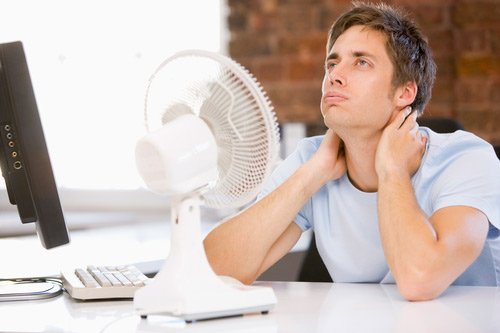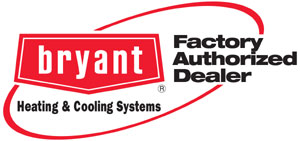5 Ways to Tell if Your Home's Thermostat is Malfunctioning
Thermostats are usually very reliable, as they don't involve moving parts or get subjected to much stress. However, they can run into problems. The thermostat controls our heating, ventilation, and air conditioning (HVAC), or in some cases just the furnace in homes without central air. It detects the temperature in the Ft. Lauderdale home and compares it to the setting selected by the occupants.
 If the room is too warm or cold, the thermostat sends a signal to the heating or air conditioning unit to turn on and adjust the temperature. When the desired temperature is reached, it sends another signal to shut off the working unit.
If the room is too warm or cold, the thermostat sends a signal to the heating or air conditioning unit to turn on and adjust the temperature. When the desired temperature is reached, it sends another signal to shut off the working unit.
Simple, but when it isn't working right it can be a major headache, especially if either heat or air won't work on a particularly cold or hot day. If a thermostat does not seem to be doing its job, there are a few ways to verify that it is malfunctioning before calling for thermostat repair.
1. The AC doesn't come on.
If you're sure the AC (or heater if it's cold) isn't kicking in, there's a chance your thermostat is broken. Many modern units won't turn on at all without a signal from the thermostat.
There are several steps to ensure that the thermostat itself is at fault.
- Make sure the AC or heating unit itself is working.
- Check that the batteries are not dead. If it's connected to the home wiring, turn off your main circuit to be safe, and ensure that the wiring is not loose within the unit.
- It's also common for dust or cobwebs to build up beneath the thermostat cover and impair the circuits. Remove the cover and blow away or carefully brush out any particular debris that may have collected there.
- Check that the corresponding circuits have not been tripped in your home's circuit panel.
- If your thermostat has a reset button, be sure to try that.
If none of this helps, and stopping and restarting the unit, or making drastic temperature changes, still won't jumpstart your air, you're probably going to need thermostat repair.
2. Your HVAC system won't shut off.
If your thermostat is working right, heat or air should stop as soon as it reaches the target temperature. If it doesn't stop, and keeps getting warmer or colder, it's not sensing what the actual temperature is. You may want to shut it off manually to save yourself some discomfort and electric bill spikes. Also, continuing to run a malfunctioning system could do further damage.
3. The temperature does not meet, or exceeds the settings.
If the heat or air unit is running, but it still isn't getting warmer or cooler, the thermostat may not be able to properly monitor temperature.
A fault in a programmable thermostat can make a room too hot or too cold. If you set a temperature, the thermostat should be able to sustain it. If it keeps exceeding temperatures, you could not only be very uncomfortable but paying higher utility bills.
An incorrect amount of voltage can cause the device to malfunction. Thermostats can also be damaged if they're exposed to moisture or physically struck too hard.
You might also want to pay attention to the actual AC or heating unit to be sure it's functioning normally. Excessive noise, rattling, or surges could mean there's something wrong with the unit itself, not the thermostat. Shut it down and call a repairman.
4. The wrong system kicks in.
If you turn the thermostat up, and cold air starts coming out of the vents, your thermostat could be badly miscalibrated. It might have been malfunctioning from the day it was installed.
Get a thermometer and set it in the air coming out of the vent. If the air coming in is warm rather than cold in summertime, or vice-versa in winter, check to see if the thermostat is set to FAN or AUTO. If it is on AUTO, it may need replacing.
Check to see if there are different temperatures in different rooms, as this could indicate other problems.
You could also try turning your thermostat up or down in five degree increments and see if that affects any change at all.
 5. Sustained Temperature, but Hotter or Colder Than the Thermostat is Set
5. Sustained Temperature, but Hotter or Colder Than the Thermostat is Set
Again, the thermostat could be miscalibrated or damaged and not reading interior temperatures correctly. Check the heating or AC unit itself, and if air is still coming through the vents even when the unit isn't running, it could mean problems with the fan. There could be a bad relay switch in the system.
Check to see that your programmable thermostat is still showing the temperature you've set. If it is on AUTO but air that's too hot or too cold is still blowing in from the fan, you'll need to get the system checked.
In order to provide comfort for the Ft. Lauderdale home and family, and avoid outrageous utility bills, it is important to have your HVAC systems inspected and serviced at the first sign of trouble.
Often it will take a qualified professional to diagnose and repair problems that could lead to more expensive repairs in the future if ignored.
If the heating or cooling systems of your Ft. Lauderdale, FL home aren't functioning properly, be sure to call AAA Modern Air at (954) 241-2523 for prompt service and quality repairs.

